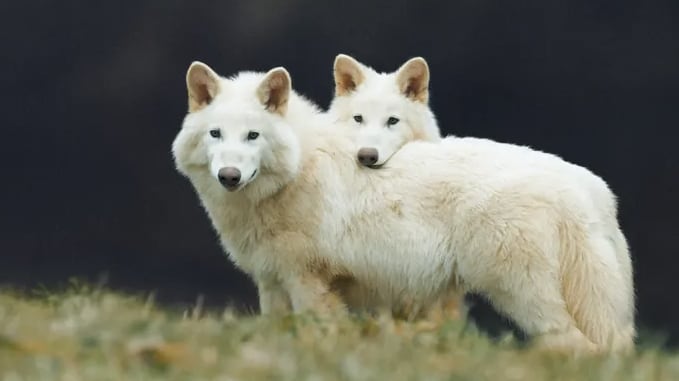The majestic Dire Wolf, a legendary creature long thought to be extinct, has made a remarkable comeback in recent years. Once roaming the lands of North America thousands of years ago, these formidable predators have captured the fascination of researchers and animal enthusiasts alike with their awe-inspiring presence.

Through dedicated conservation efforts and genetic research, scientists have been able to revive the population of the Dire Wolf, bringing them back from the brink of extinction. This resurgence is not only a testament to the resilience of nature but also a victory for biodiversity and the preservation of endangered species.
The Dire Wolf, known for its massive size and powerful build, played a crucial role in the prehistoric ecosystem. With its sharp teeth and keen hunting instincts, it was a top predator, keeping the ecological balance in check. The return of these ancient creatures signifies a restoration of the natural order and a nod to the intricate web of life that connects all living beings.

In addition to their environmental significance, the reappearance of the Dire Wolf has sparked a renewed interest in paleontology and evolutionary biology. Researchers are eagerly studying these creatures to unlock the mysteries of their genetics and behavior, shedding light on the ancient past and offering valuable insights into the history of life on Earth.
As the Dire Wolf roams once again across the wilderness, it serves as a symbol of hope and perseverance. Its revival is a reminder that with dedication and innovation, we can reverse the damage done to our planet and pave the way for a more sustainable future. By protecting and conserving endangered species like the Dire Wolf, we preserve our shared heritage and ensure a world rich in biodiversity for generations to come.
In conclusion, the resurgence of the Dire Wolf is a triumph over extinction, a testament to the power of human ingenuity and a beacon of hope for the preservation of our planet’s natural wonders. As these majestic creatures reclaim their rightful place in the wild, they inspire us to continue our efforts in protecting and nurturing the incredible diversity of life on Earth.